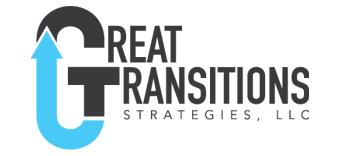Getting Out of Your Comfort Zone
It was my first time trying to surf, how hard can it be? I knew it would be challenging but I wanted to get out of my comfort zone to try and master something new.
Well, I was out of my comfort zone as soon as I hit the water. The waves were higher than I anticipated, I was not as efficient at paddling as I thought I would be, and I did not get much instruction prior to getting wet. Flailing is the word that best describes my experience.
My next outing was with someone capable of instructing me, in conditions that matched my experience. Once in the water, constant advice on what was working made a world of difference. Progress and fun.
Take your own personal story or event and substitute it for, surfing. Most of us have been there. Now replace the activity with a professional event you took on or were assigned that packed a lot more challenge than expected, lacked instruction and expectations, and you were left to your own devices with little feedback. Were you “out of your comfort zone” or “OUT OF YOUR COMFORT ZONE”?
To grow we have to get out of our comfort zone. Growth comes when we stress, stretch, and push ourselves to reach a new limit. When have you grown the most? When pushed to the limits or when pushed to a reasonable level?
How are you leading your team and how far out of their comfort zone are you pushing them? Putting them in water that is clearly at the limits of their capacity may not be the best move. They may grow but, at what expense.
Recollect that one challenge you were given that pushed you to your limit. Did you grow? How painful was the growth and are you willing to do it on a regular basis?
Here are three considerations I have for putting individuals and teams out of their comfort zone:
- Challenge at the right level
- Provide instruction on the expectations
- Create an iterative learning loop
Challenge at the Right Level
I encourage starting small to generate early wins to taste success and build confidence. Then think of a treadmill that allows you to increase the steepness of the platform as well as the speed. It can be catastrophic to start out at the presumed limit of one’s capability. Being out of breath and overwhelmed from the start is not a solid recipe for success.
Provide Instruction on the Expectations
Ever put incredible effort into a project and when you provided the finished product were met with a “that is not what I wanted”? Infuriating.
Ever do that to yourself, complete a project or task and say to yourself “that wasn’t what I really needed to accomplish”? Yes, sometimes we do that to ourselves when we do not clearly define what success looks like.
When I am not clear on expectations at the initiation of a project, the frustration for me and the individuals doing the work can be immense. Taking the time upfront to have the conversation on the desired end state is liberating. Particularly when we add the intermediate milestones into the discussion. It has us all aiming at the same outcome and frees up mental capacity to work with confidence.
Create an Iterative Learning Loop
We started this conversation talking about growth. Feedback with time for reflection creates the conditions for growth. Agile program management is built on the concept of iterative deliveries and assessments to refine the deliverable. This allows the team to learn, adjust the path, level of challenge, and modify the end state as needed.
Want to see personal and professional growth for you and your team? Then get out of your comfort zone and apply these three considerations.
They will help you create the right level of stress created by taking on new challenges, building new competencies, and stretching capabilities. They help you lose the stress of worrying about; surviving a task beyond you or the team’s capability, questioning the direction of your efforts, and whether everyone is focused on the same goal.





